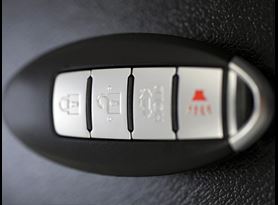FCC Part 15 - Instruction Manuals for Consumer Class A & Class B Devices
According to FCC Part 15 guidelines, the instructional manual for an intentional or unintentional radiator must caution the user that any modifications made to the product and not expressly approved by the responsible party could void their authority to operate the equipment.
In most cases, manufacturers of digital devices must include these instructions in their technical documentation in order to be compliant per FCC requirements. However, it is critical to ensure that the right instructions are included for the right product types.
Class A vs. Class B EMC devices
FCC Part 15 guidelines outline two major types of digital devices: Class A and Class B. Generally speaking, Class A devices are intended for industrial environments, while Class B devices are intended for residential use. Depending on its classification, the FCC requires specific language to be included in the instruction manual.
Instructions for Class A devices
According to FCC Part 15, Class A devices must contain the following text (or something similar) in the manual:
Note: This equipment has been tested and found to comply with the limits for a Class A digital device, pursuant to part 15 of the FCC Rules. These limits are designed to provide reasonable protection against harmful interference when the equipment is operated in a commercial environment. This equipment generates, uses and can radiate radio frequency energy and, if not installed and used in accordance with the instruction manual, may cause harmful interference to radio communications. Operation of this equipment in a residential area is likely to cause harmful interference in which case the user will be required to correct the interference at his own expense.
Instructions for Class B devices
In contrast, manuals for Class B devices must contain a version of the following:
Note: This equipment has been tested and found to comply with the limits for a Class B digital device, pursuant to part 15 of the FCC Rules. These limits are designed to provide reasonable protection against harmful interference in a residential installation. This equipment generates, uses and can radiate radio frequency energy and, if not installed and used in accordance with the instructions, may cause harmful interference to radio communications. However, there is no guarantee that interference will not occur in a particular installation. If this equipment does cause harmful interference to radio or television reception, which can be determined by turning the equipment off and on, the user is encouraged to try to correct the interference by one or more of the following measures:
- Reorient or relocate the receiving antenna.
- Increase the separation between the equipment and receiver.
- Connect the equipment into an outlet on a circuit different from that to which the receiver is connected.
- Consult the dealer or an experienced radio/TV technician for help.
Compiling a user manual for Class A & Class B devices
Having proper instruction and user manuals is an important part of technical documentation for compliance programs across the globe. Our advisory services programs exist to support product designers, manufacturers, distributors and importers, to help make your path to product certification faster, easier and less expensive.
For more information about EMC and radio testing or FCC Part 15, contact us today.
Find related Resources
Related Services

Advisory Services
Element's advisory services deliver world-class strategies that steer systems compliance at the program management level.

General Product Safety GPSD (2001/95/EC) & GPSR (EU/2023/988)
Element provides you with the testing, guidance, advice, and support to meet the requirements of the General Product Safety Directive GPSD (2001/95/EC) and the latest General Product Safety Regulations GPSR EU (2023/988).

Global Approvals
Element can serve as your single point of contact for all of your global product approvals.

Wireless Radio Testing
Element works with Chipset Vendors though to those integrating radio modules to enable them to deliver their wireless and radio products to market.

